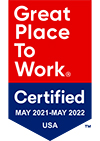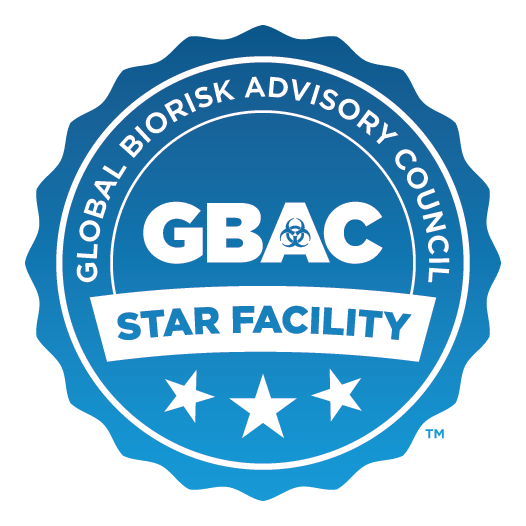Fitch Upgrades Capital Region Airport Commission (VA) Airport Revs To ‘A’; Outlook Revised To Stable
Jun 6, 2017
New York (June 6, 2017)
Fitch Ratings has upgraded to ‘A’ from ‘A-‘ the rating on approximately $84 million outstanding airport revenue bonds issued on behalf of the Richmond International Airport (RIC). The Rating Outlook on all bonds has been revised to Stable from Positive.
The upgrade to ‘A’ from ‘A-‘ reflects RIC’s demonstrated trend of robust financial metrics evidenced by rising debt service coverage ratios (DSCRs) above 2x and declining leverage in the 2x-3x range. The continuation of strong coverage and stable to positive traffic performance coupled with a stable airline cost profile further support the rating.
KEY RATING DRIVERS
Summary: The rating reflects the airport’s small, predominantly origination/destination (O&D) market within a growing metropolitan capital area. The airport’s financial profile remains strong but is significantly supported by non-aviation revenues. Balance sheet strength is supported by moderate debt levels and rising liquidity which provides the ability to sustain some weakness in operational performance. Additionally, the airport’s low cost per enplanement (CPE) at under $6 with limited risk for increases serves as a credit strength within the rating category.
Revenue Risk- Volume: Midrange
Essential Service Area with Small Enplanement Base: RIC serves a relatively small, but primarily O&D traffic base of over 1.7 million enplanements. Enplanements have exceeded fiscal year (FY) 2011 levels since experiencing some erosion beginning in FY 2009. Richmond, VA (rated ‘AA+’ with a Stable Outlook) has a strong underlying economic base supported by governmental and educational sectors. The airport’s traffic is favorably balanced with business passengers and a diverse carrier mix. Two airports in the Washington D.C. region are within 90 miles of RIC, but competition is limited.
Revenue Risk- Price: Midrange
Airline Agreement Provides Stability: RIC operates with a competitive and generally stable cost structure under its compensatory rate-setting AUL which is renewed annually. Non-airline revenue accounts for approximately 75% of pledged revenue providing a CPE in the upper $5 range. While Fitch believes a diverse revenue stream contributes to low airline costs, a reliance on nonairline revenue could expose the airport to risk through enplanement volatility or economic cyclicality.
Infrastructure Development and Renewal: Stronger
Manageable Capital Plan: The capital improvement plan (CIP) for 2017-2021 is robust at $232 million; however, management does not expect to issue additional parity debt that would adversely affect debt coverage in the near term. Recently completed projects include a major taxiway reconstruction and a snow removal equipment building. The remaining airside projects will be predominantly grant-funded.
Debt Structure: Stronger
Conservative Debt Structure: The airport’s debt is entirely fixed rate with a flat-to-declining amortization profile. Total debt service requirements decreases from approximately $8.8 million in 2017 to $3 million in 2027 and remains flat through maturity. The debt is further supported by a fully cash funded debt service reserve fund (DSRF) of approximately $6 million as leverage continues to decline.
Stable Coverage, Moderate Leverage: Debt service coverage continued to improve to 2.75x in FY 2016, up from 2.26x in FY 2015 and from a historic low of 1.58x in FY 2010. Leverage is manageable at 2.24x net debt to FY 2016 cash flow available for debt service (CFADS) while the airport’s 516 days cash on hand (DCOH) provides additional financial cushion.
PEER GROUP
RIC’s peer group consists of similarly sized enplanement base airports such as Albany, NY (‘A-‘; Stable Outlook) and Tucson, AZ (‘A’; Stable Outlook). RIC benefits from better diversification of carriers than these peers as well as lower CPE levels. RIC’s leverage and liquidity levels are more robust than those of Albany, and the airport also benefits from stable to positive enplanement growth in recent years.
RATING SENSITIVITIES
Future Developments That May, Individually or Collectively, Lead to Negative Rating Action:
- Elevated traffic or economic volatility leading to lower than forecasted nonaviation revenue or debt service coverage.
- To the extent the Commission borrowing requirements for the capital program leads to measurable increases in debt above the current plan of finance and leverage above 4x.
Future Developments That May, Individually or Collectively, Lead to Positive Rating Action:
- Given the current operating profile, absent a measurable increase in the airport’s enplanement base along with improvement to coverage and leverage metrics, upward migration is unlikely at this time.
CREDIT UPDATE
Performance Update
FY 2016 enplanements increased 2.8% to almost 1.8 million due to increased overall traffic in the capital region, building upon the previous 5.2% growth in FY 2015 and 2.9% growth in FY 2014. Increased airline competition and decreased fuel prices in conjunction with the steadily improving local economy continued to stimulate RIC passenger traffic given that most of its traffic is generated by the population and economy of the region. Retention of service to key destinations and new or enhanced service initiatives also contributed to the increase in passenger activity. FY 2016’s growth rate of 2.8% exceeded Fitch’s base case assumption of 20/0 growth. Traffic growth at the airport has been stable in recent years, resulting in a compound annual growth rate (CAGR) of 1.5%.
Total operating revenue increased 6.9% to $44.4 million in FY 2016, driven by increases in enplanement volumes (up 2.5%), parking (up 2%) and concession revenue (up 2.9%). The airport is exposed to discretionary spending risk with parking and concession revenues contributing 45% and 20% of pledged operating revenue, respectively. The airport’s operating costs decreased 2.9% in FY 2016, driven by decreases in personnel, professional service, insurance and supplies expense. Fitch views this decrease as a positive factor, given the simultaneous increase in enplanements and operating revenues.
Management plans to add two or three more floors to the North Public Parking Garage, which would require issuing an additional $35 million in parity debt in the near term. They will continue to monitor parking growth for another year and ensure that Uber traffic does not reduce parking revenues before finalizing any plans for the parking garage. The expansion to the parking garage would stimulate further revenue growth from parking, which already contributes 46% of total operating revenues. The current CIP will be funded from a combination of state and federal grants, passenger facility charges, local funds, and additional debt. The airport recently completed a $31 million dollar taxiway and a $9.5 million dollar snow removal equipment building.
Fitch Cases
Fitch’s base case scenario assumes a 1.6% enplanement and 3% expense CAGR through 2021. Revenue growth from parking and concessions track enplanement growth, while revenues from landing fees remain flat at 2% per annum and revenues from rentals and apron fees remain flat at 1% per annum. Under this scenario, DSCR is expected to be 2.61x in FY 2017 and remain relatively flat throughout the forecast period. CPE levels fall to $5.48 and leverage also falls to 1.1 Ox by FY 2021.
Fitch’s rating case scenario assumes an enplanement stress of 5% in FY 2018 with moderate recovery thereafter. Fitch also assumes a 2.4% expense CAGR through the forecast period, with no expense growth assumed in the year of the enplanement stress. CPE levels grow to $5.94 in FY 2021 under this scenario, but leverage remains low at 1.19x when not including any additional debt. DSCR is expected to average 2.46x through the forecast period, with a minimum of 2.41x in FY 2021. Leverage would rise to 3.58x in FY 2018 when including additional borrowing for that same year, but still remain favorable relative to criteria and peers at below 4x. The higher leverage when including the $35 million issuance does not incorporate additional parking revenues resulting from the garage expansion in its calculation of cash flow available for debt service (CFADS).
Asset Description
The bonds are secured by the net revenue of RIC’s operations and certain funds per the bond resolution.
Contact:
Media Relations:
Sandro Scenga, New York,
212-908-0278,
Email: sandro.scenga@fitchratings.com.
Additional information is available on www.fitchratings.com.
ALL FITCH CREDIT RATINGS ARE SUBJECT TO CERTAIN LIMITATIONS AND DISCLAIMERS. PLEASE READ THESE LIMITATIONS AND DISCLAIMERS BY FOLLOWING THIS LINK:WWW.FITCHRATINGS.COM/UNDERSTANDINGCREDITRATINGS.


